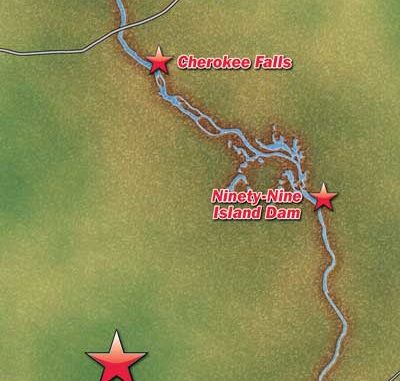
Paddle the Broad River and escape the summer heat — but don’t ignore the great fishing.
As the sun rose to treetop level, the summer heat was ominous. For bass fishermen, August is a first-light, last-light affair or a night-time foray. There are precious few places where anglers dare hope to endure the daylight hours, much less catch bass in the heat.
In the Upstate, the Broad River is one of those places.
With his kayak pointed downstream, Brandon Barber quietly slipped his paddle and allowed the boat to drift with the current. Off to his right, the flowing water edged between two flat shoals and created a parking space-sized pool along a steep, tree-lined bank.
With a quick flick of his wrist, Barber shot a bright pink trick worm, rigged wacky-style, to the edge of the pool, then eased the bait into the current. A quick flash of bronze erupted, and the worm disappeared. His 9-foot kayak rocked slightly as he set the hook.
With a powerful thrust of its tail, the smallmouth bass vaulted out of the water, swam clear of the shoals and headed downstream. Three zig-zagging runs later, Barber eased the 3-pound fish to the surface and slid it to hand.
The idea of chunky smallmouth bass inhabiting a stream in the rolling hills of the Palmetto State might be foreign to some, but not Barber. He’s one of a growing number of fishermen who have discovered one of the S.C. Department of Natural Resources’ most overlooked success stories.
“This is probably the best fishery for numbers of smallmouth in the state,” he said.
The SCDNR began stocking smallmouths in the Broad River drainage in the early 1980s. According to Jason Bettinger, an Eastover-based fisheries biologist, Kings Creek — a tributary in York County — was the site of the initial stocking, as it was thought to be more suitable habitat for smallmouth. But shortly thereafter, the fishery expanded into the Broad River.
“We’ve since moved our stocking program directly into the Broad River,” said Bettinger. “Our stockings take place in three places: below Gaston Shoals, just below the 99 Islands Dam, and also at Neal Shoals just north of Carlisle.”
The SCDNR stocks in both the spring and fall, pouring between 8,000 and 10,000 fry measuring about an inch long into the fishery early in the year and around 2,000 6-inch fingerlings after the summer season ends. The accumulated stockings have created a tremendous fishery.
“The average smallmouth ranges in the 10- to 12-inch range, but there are also a number of good fish in the Broad, fish that will go in excess of three to four pounds,” Bettinger said.
Barber concurs with this assessment.
“This is a unique fishery” said Barber, who spends a lot of time plying the Broad for bronzebacks when he’s not managing the fishing department at the Southern Sportsman in Inman. “Naturally, there are smallmouths up and down this river, and they can be caught year-round, but to me, the best time to catch them is in the dead of summer. August usually means the lowest river flows of the year, and that concentrates fish.”
Unlike their largemouth cousins, smallmouth bass prefer flowing water and the hard bottoms of the slower, deeper pools found along the Broad. The grass-lined mud banks that drop off into chest-deep water littered with stumps and old wood may look like a bass angler’s dream, but in truth, they hold very few smallmouths.
“The first thing I look for is rocks; the second is current,” Barber said. “Pretend you’re looking for good trout water rather than bass water, and you’re going in the right direction. The river has stretches of both, and that’s what makes this such a great place to float-fish. You can paddle through the deeper spots and then either fish the rocky areas from the boat or get out and wade-fish.”
The choice to wade or fish from a boat is a personal one. The wading anger can beach his craft on a flat rock and work a shoal-strewn stretch of water in detail. Flowing waters are normally shallow enough to wade across, and getting in the water is more than comfortable on a hot day.
“If running water is feasible for wading, it’s probably a good smallmouth stretch,” Barber said. “However, the boat has the advantage of allowing the angler to present a lower profile. I don’t think the kayak spooks fish like an angler tromping along, stirring up the bottom does. You can also position yourself better in a boat than you can just by wading, especially when working a stretch of swifter water.”
Like any kind of bass fishing, different baits and different patterns work better at different times of the year. Barber suggests that when the water is cooler, it’s time to slow down and fish soft plastics and finesse baits on the bottom. His summer pattern, however is to run-and-gun.
“I have not found a bait that smallmouth won’t hit in this river,” he said. “I’ve used jigs, crankbaits, topwater lures and soft plastics, I’ve even caught smallmouths on a homemade lure my father made for me out of an old .270 shell casing.
“To cover the most water, I’ll typically use something I can fish fast. I like trick worms or floating worms that I can cast upcurrent and work across a likely holding area. The same thing goes for floating flies or bugs fished on a fly rod. If a fish doesn’t take it, I’ll move on.
“There are a lot of fish in the 1- to 2-pound range, as well as some bigger fish. I’ve never found them to be very picky when something edible floats by; if one fish doesn’t eat it, another one will.”
Barber said many of his customers want to know the best fishing spots on the Broad River, and he has trouble picking one stretch of water over another. He shares reports with several anglers who fish along a 130-mile stretch of the river from the North Carolina state line down to Parr Shoals near the town of Peak.
“I fish near Gaffney because that’s the closest place to get to for me,” he said. “I think we probably catch a greater ratio of smallmouth up here than further down the river. The neat thing is, you can fish the shoal areas for smallmouth, and then start catching some good largemouths on down the river.
“I’ve seen Hank Parker on TV fishing the Broad somewhere down around Union, catching a mix of largemouth and smallmouth. The guys down near Peak tell me they start adding stripers in the mix the closer you get to Columbia.”
Floating the Broad is accomplished by parking two vehicles and floating downstream from one spot to another. Another option is to park above one spot, fish while floating downstream, then paddle back. With a kayak, paddling upstream isn’t nearly the chore that paddling a canoe or dragging a small johnboat is.
“One of the popular spots is to put in at the dirt ramp below 99 Islands Dam at Kings Creek and float down to the Irene Bridge,” Barber said. “That’s what they call the ‘Steel Bridge.’ You can get a vehicle down there to take out. Another good paddling spot is above the 99 Islands Dam. There’s a little picnic spot just above Goat Island on the left that you can put in and work the half-mile stretch down to the dam and then paddle back. Another similar spot also above 99 Islands is further up off of Shelby Highway. You can put in off Drano Rd, and float down then paddle back. In the past, that has been a good place to fish.”

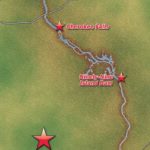
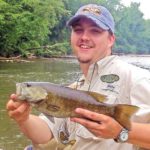
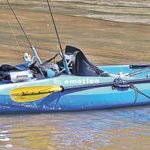
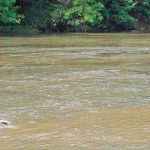
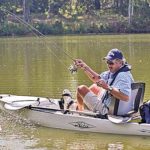
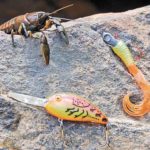



Be the first to comment